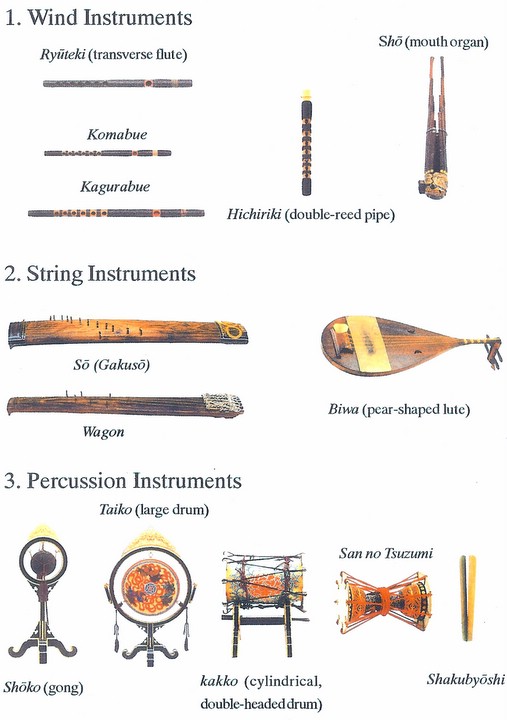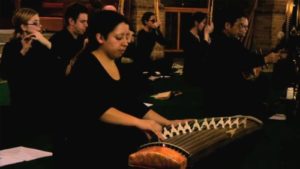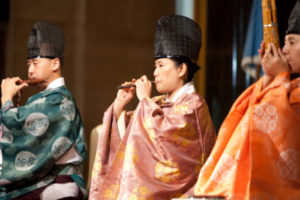Seminar Report
The 1991 Summer Seminar of the Research Group on Women and Buddhism in Japan
(Kenkyukai: Nihon no Josei to Bukkyo)
The following is based on Japanese discussion reports and abstracts of papers kindly sent to us by Prof. NISHIGUCHI Junko.
The 1991 Summer Seminar of the Research Group on Women and Buddhism in Japan (Kenkyukai: Nihon no Josei to Bukkyo) was held in Kyoto on August 27 and 28 with fifty-one researchers in attendance.
A review of the past eight years since the establishment of the Research Group in 1984 led to lively discussion as the group reconsidered its original hopes and uncertainties and evaluated the results of their work to date and its impact on the scholarly world at large.
I. DISCUSSION REPORT
In 1984, we felt that:
1. The strong impact, the almost shock effect, received from the publication of the five-volume Nihon josei shi (History of Japanese Women) under the editorship of Wakita Haruko had encouraged many of us to believe that it was, after all, possible to re-write history. It had also, however, demonstrated the need to criticize the practice of recounting history according to male principles and definitions.
2. Women’s History should not be pursued merely as a supplement useful in filling in the edges or gaps in standard political or economic history. Rather we felt strongly the need to be able to write history from the standpoint of women’s history itself.
3. We male researchers in the group felt that there was a danger of linking Women’s History research to one’s own personal problems of sexual discrimination such as experienced by all women, but at the same time we were all nonetheless moving in-eluctably closer and closer into the study of this very important and interesting research topic.
4. In the hope of re-writing the history of Japanese Buddhism we had high hopes for our “Women and Buddhism” project and launched it with Prof. OSUMI Kazuo’s “Call-to-the-field” article in the first issue of our Bulletin in 1984.
5. We knew at the time that the major framework of the History of Buddhism was composed of a) biographical studies of high ranking priests; b) institutional histories of temples, the organizations of the priesthood and religious bodies; and c) theology and doctrines; and that there would be the danger that “Women and Buddhism” would be relegated to a supplementary “fill-in-the-gaps” position, or worse, that in pursuing the field it would be assumed that all the fundamental problems in the history of Buddhism had already been established and that the situation of “women” would merely be “applied” to an already existing theoretical framework.
Now in 1991 after eight years, what has been realized? We have certainly succeeded in accumulating much corroborative evidence for the new history we set out to write about Women and Buddhism. But while we want freely to rejoice about this, on the other hand we must point out several problems that emerged:
1. There has been a tendency for our research data accumulation to be too much dependent upon research topics that happen to attract the interest of individual scholars. Put in the baldest of negative terms this means that as this field has become recognized as rich with as yet “uncut grain” and as the numbers of scholars in the field increase, the tendency has been for them to use the field to carve out their own little corner and just harvest the grain so as to build up their list of publications. We are not as a group yet plowing the field deeply enough to make a funda-mental advancement in the nature of the field or the harvest.
2. Unfortunately, even after eight years “Women and Buddhism” is still viewed as merely supplementary to the History of Thought, History of Religious Sects and the Institutional History of Temples. In essence, the History of Buddhism is still viewed as nothing but the History of Priests and their temple organizations.
3. By the same token Women’s History remains in a merely supple-mentary and inferior position vis à vis Political and Economic History. That is to say, the discipline of History is viewed solely as an examination of political institutions and issues of power. This in itself is a political stance that denies the validity of the historical study of the daily life of ordinary people.
4. Eight years later what has become of our basic intent, as set forth in OSUMI Kazuo’s “Call to the field,” to study Women’s History as a means to a critical analysis of the present image of “History” itself (including Buddhist History)? Clearly, we have retreated from this basic intent.
A Re-examination of the Issues
It is important to study Women and Buddhism within the traditional framework of temple and religious body organization, impact on society and nation, and leadership in evangelism among the populace. In doing so we discover new and revelatory aspects. However, merely discovering the women within the context of the History of Buddhism is not a study of “Women and Buddhism.”
What, then, is the study of “Women and Buddhism”? We lack a formal definition. We are now at present faced with the need to think about Buddhism through the woman’s perspective. At the same time we must think about Women’s History from a Buddhist perspective.
In the way of theoretical problems
The following issues have come to the fore:
1. Gender awareness in Buddhism. If sex was viewed as bodily differentiation, was there also an awareness of gender? How did awareness of sex differentiation and sexual discrimination relate to salvation? When sex was raised as a problem why did sexual differentia-tion become a condition governing satori or salvation (jobutsu).
2. When considering Women and Buddhism in the context of cultural phenomena is it possible to think of “male Buddhism” and “female Buddhism” as cultural phenomena? How would such sexually differen-tiated cultural phenomena exist and function?
3. In the context of organization and faith, what would be Buddhism as defined by women’s religious organizations and women’s faith?
4. What are shukyosha (persons engaged in the religious life) if they are female? Without having to add the female prefix to what is normally viewed as a male word, can we perceive what being a shukyosha means from the woman’s perspective?
5. Historical theory in the area of religious studies lags behind other areas of historical theory. As a result Buddhist History occupies a lower place in the artificial academic hier-archy of history writing. Further, in the utilization of primary sources the methodology taken for granted is the use of government and institutional documents. History is to evaluate and theorize about this kind of data on the basis of male interests and principles. As a result the whole issue of methodology and the use of sources is a fundamental one for us that must be faced squarely.
Our focus to date for the gathering of evidence and data
1. Women’s life cycle events and ceremonies and their relation to Buddhism: birth, maturation, parturition, child-rearing, barrenness, the unmarried life, etc.
2. Buddhism in the context of Women and the Family (ie) structure, marriage, property, ceremonies, widowhood
3. Nuns’ view of priests
4. Priests’ descriptions of women
5. Matrilinear organizational developments within Buddhism
6. We also struggle with how to evaluate critically historical records written by men, and to find evidence of women who leave no written records.
Anxieties
Recent articles in academic journals in the fields of literature and Buddhism raise our anxieties over current approaches that attempt merely to fit newly emerging evidence to already established concepts. It would appear that scholars of Japanese literature have been little affected by Women’s History, and scholars in the discipline of Buddhist literature seem only to have progressed to the point of discovering that not only men but women too were subjects and writers of Buddhist literature. Worse, scholars in these fields now seem to reveal a sense of self-satisfaction at their having discovered such new data that includes women, which is surely a negative effect and leaves us with little promise for the funda-mental future development of these fields.
Future directions
1. We must establish main themes that need to be addressed (from a different stance than that of traditional historians) and attract serious scholarly attention to these themes.
2. We must challenge the perimeters of current established areas of research.
3. There is a fundamental need for the development of theory in addition to and based on the newly emerging evidence. We must overcome the current tendency toward evidence gathering in the context of shallow, immature theory. It is essential that we advocate “Women and Buddhism” as a field and deepen our attack on the problems heretofore addressed.
4. We continue to be plagued with the questions of why Buddhism developed as a religion that discriminated against women; and likewise why women nonetheless turned to Buddhism for salvation.
5. It is essential that we open up theoretical dialogue irrespective of the historiography or sources before us.
II. SEMINAR PAPERS
Four papers were presented:
“Women and the Various Buddhisms in Early Japan”
by YOSHIDA Kazuhiko.
Abstract: The early ninth century setsuwa collection Nihon Ryoiki provides rich evidence for the state of both provincial clan Buddhism and popular Buddhism (as opposed to state Buddhism). In this work one finds a great number of women active on an equal level with men, as preachers, icon makers, and women referred to as “bodhisattvas” who may be considered as founders of Buddhist cults. One finds little evidence of gender discrimination in this work. The one story (Vol. III Story 19) where a male lecturer questions the fact that a nun participated freely in a religious ceremony is indicative, I believe, not of a lowering of the status of nuns in general at that time but rather reveals a case of the opposition between a priest of state Buddhism and a “bodhisattva” of popular Buddhism. I believe that the world of popular Buddhism and the Buddhism of the provincial clans were domains of both men and women. In contrast, state Buddhism was colored heavily from the start by the male presence. The great National Temples were all for male priests (though from the second half of the eighth century nunneries were added to the system). The areas of teaching and scholarship were the domain of male “scholar-priests” from the start. The idea of “court Buddhism” as opposed to state Buddhism, put forth by HONGO Masatsugu, should perhaps be thought of as being a female Buddhism which evolved to com-plete the female gender deficient parts of state Buddhism. The national nunnery, Hokkeji, for instance, should be studied from this perspective. For women, the realm of state Buddhism and that of popular Buddhism were two separate worlds. Only by examining fully each of these various Buddhisms can one interpret the history of Buddhism.
“The Names and Ranks of Nuns”
by KATSUURA Noriko.
Abstract: As a means to compare the social roles and the characteristics of the lives of priests and nuns I would like to examine nuns’ names and their ranks (both in lay and religious life) and demonstrate that the difference in public recognition and labelling of priests and nuns is related structurally to the way in which males and females were recognized within both the government civil servant ritsuryo system and in the state Buddhist ecclesiastical structure in ancient Japan. In the Heian period records, men in certain court rank levels, after entering the religious life were given a religious name, but in the case of women of the same court rank levels, even the simplest descriptive word indicating their new role (nyudo, one who has entered the Path) was omitted, and only their secular given names were used. The reasons given for this are that women, even after becoming nuns, for the purpose of retaining their civil servant salaries/stipends, do not lose their secular names in the official ranks list; in contrast, men lose their official ranks. We are able to trace back to the eighth century many such examples of nuns who have not lost their public designation by secular ranks. As a basic principle, however, both men and women who had entered the religious life were recognized to have taken Buddhist names and to have relinquished secular ranks and salaries/stipends. If those who entered religious life tried to retain their secular ranks, each person had to be treated as a special case, with no differentiation between men and women. Although there are several distinctions based on sex (such as the existence or not of males or females in some secular ranks), still court ranks themselves had no sexually discriminating vocabulary, and it was possible for both men and women to share these ranks. Likewise, clerical ranks were at first limited only to people who had left secular life and were in principle shared by both men and women. In 760, however, ranks meant only for priests were established; this no doubt necessitated the creation of a separate system of ranks for nuns and this in turn accelerated the public shift whereby nuns then came to be recognized by their Buddhist and not secular names. With the scandal and downfall of the politically active priest Dokyo (d. 772), however, priests were declared ineligible for secular ranks, and payment of salaries or stipends depended more and more upon men’s clerical institutions and ranks. In contrast, as nunneries weakened and the number of nuns who received religious ranks likewise diminished, the number under secular rank became increasingly obvious. Behind these phenomena lies the gender discrimination, on a structural level, of the ritsuryo governmental system and the ecclesiastical system.
“Women and the Concepts of shukke and jukai”
by NISHIGUCHI Junko.
Abstract: A great deal of Buddhist scholarship has been amassed concerning shukke (renouncing family and secular life and responsibilities and entering the religious life) and jukai (receiving the Buddhist precepts; ordination). However, no matter how one dissects the research of previous scholars seeking to gain some concrete image of how priests became priests and what shukke and jukai represented to them we glean absolutely nothing in our understanding of what these acts were for women. This is because Buddhist scholarship to date has been concerned primarily with doctrinal matters, and historians’ interst has focussed on problems of the priesthood (from permission to enter it, to certification of having received the precepts, and on the names of officiating priests and recipient priests, etc.). No interest has been demonstrated in concrete cases of how the people themselves from the ancient and medieval periods understood the actions known as shukke and jukai. In 840 Princess Seishi, with the priest Ennin as her preceptor, received several concrete levels of the precepts and planned to construct a nun’s ordination plat-form (required for formal ordination but then extant only for male use). Although her plan never came to fruition in her lifetime, a nuns’ ordination platform was finally later constructed at Hoseiji. It is problematic whether that platform ever served its intended purpose. Indeed there is no evidence that Heian nuns took the precepts in this way. If publicly recognized ordination platforms had the function of giving rise to a state-recognized clergy, then nuns did not exist as officially recognized members of the clergy. We cannot maintain however that because nuns did not receive the precepts publicly on state-recognized platforms that they were less qualified as nuns. I believe that they fulfilled the requirements by following the disciplines, erecting an ordination platform, and receiving the precepts from a preceptor (irrespective of state recognition). Before we tackle the problem of public versus private ordination platforms, we need to investigate how shukke and jukai were actually practiced by women and whether or not there was a step-by-step progression (female lay-devotee to novice to nun) which corresponded to that progression for males. To this end I would like to take the work Shukke sakuho (a guide to shukke for women of the high aristocracy written 1113-1118) and contrast it with concrete records of women’s actual shukke and jukai that can be found in the diaries of aristocrats. These works, known as shukke-ki or records of the shukke of imperial consorts, were composed generation after generation on the occasion of the shukke of the imperial consorts, and these works need to be studied carefully.
“Various Problems in the History of Zen Nuns of the Soto Sect”
by ISHIKAWA Rikizan
This paper raises several major questions in the study of the history of Zen nuns and reviews historical documents dated 1774, 1839 and 1930. A Japanese language abstract is available upon request from IMJS.
III. BOOK REVIEWS
The seminar concluded with a review by YOSHIDA Kazuhiko of two recent books of significance to the field of Women and Buddhism. Both complete reviews are available from IMJS upon request.
TAKADA Mamoru’s Edo no akuryo baraishi (The Edo Exorcist). Tokyo: Chikuma shobo. Centering on the career of Yuten shonin (1637-1718), a priest of the Jodo sect, this book contains much revelatory data concerning women’s faith and such problems as infanticide and abortion, with detailed accounts of Yuten’s activities and pronouncements regarding the salvation of women.
YAGI Yuko’s Josei to ongaku (Women and music) in Minzoku ongaku sosho (Folk Music Series), Vol. 2. Tokyo: Tokyo shoseki. This book, a multi-authored collection of research articles covering several countries, is reviewed because of its remarkable interconnections with the Women and Buddhism field. It includes topics on songs that celebrate the wedding, songs about a woman’s life cycle, songs that praise one’s husband, and analyzes the difference between male and female songs in various cultures. The chapter on Japan deals with Okinawan musical culture and women. Prof. Yoshida discusses the book in terms of the theoretical problems it raises that resemble those of the Women and Buddhism field. No book to date has yet dealt with the history of Japanese music with a focus on women and their particular function in the creation and performance of various traditions of music.
The Japanese language abstracts of all of the above reports and papers from which this report has been prepared are available upon request from IMJS, free of charge, as part of our contribution to improved communication between Japanese and Western scholars in the field of Women and Buddhism in Pre-Modern Japan.
–Barbara Ruch
Director, IMJS
[ Volume 3 of IMJS Reports was compiled by Indra Levy ]





 In conjunction with the Gagaku-Hōgaku Classical Japanese Music Curriculum and Performance Program at Columbia University, launched in September 2006, the Institute for Medieval Japanese Studies presents several public gagaku concerts and instrumental workshops to introduce the ancient music of Japan to a greater audience at Columbia University and in New York.
In conjunction with the Gagaku-Hōgaku Classical Japanese Music Curriculum and Performance Program at Columbia University, launched in September 2006, the Institute for Medieval Japanese Studies presents several public gagaku concerts and instrumental workshops to introduce the ancient music of Japan to a greater audience at Columbia University and in New York.